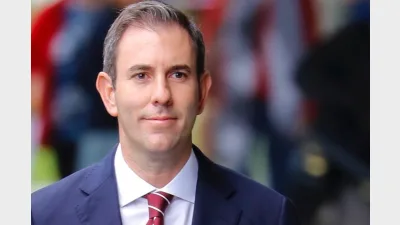Administrators searching for innovation



While Superstream has dominated the attention of all of Australia’s superannuation administrators, Damon Taylor writes that they have still not lost sight of the need for innovation in what has become an increasingly competitive marketplace.
In a superannuation industry rife with changing regulatory requirement, increasing competition and challenging member engagement, the meanest assessment of administrators still recognises them as the industry’s masters of multitasking.
Indeed, from Stronger Super and SuperStream to tendering and innovation, administrators’ juggling act is impressive but for Peter Brook, Chief Executive Officer of Pillar, there is simply no other option.
“What I think many administrators have come to realise is that you can’t be singularly focused in this market,” he said. “We’ve got all of this regulatory change and the reality is that it isn’t simple.”
“It requires a heck of a lot of changes to systems and procedures to get it right,” Brook added. “But if that was all we were doing, I think that we’d wake up one day finding that we’re a long way behind where the market has gone.”
“So yes, we’re doing Stronger Super and we’re working very hard on that but we’re also looking to move our business ahead as well.”
Describing a similar administration reality, Ben Walsh, Senior Partner and Financial Services Business Leader, Pacific for Mercer, said that super industry participants would be only too happy to have the Stronger Super and SuperStream work behind them.
“I’d love to say that the work around Stronger Super and Super Stream was over,” he said. “And I suppose it’s largely over as it relates to MySuper but SuperStream is a whole different kettle of fish.”
“There are a number of activities there where Mercer, and the industry more generally, are working very hard to obtain the benefits of SuperStream on behalf of our clients and our members,” Walsh continued. “But while the regulatory focus is still there, there’s also been a shift when it comes to our thinking and our clients’ thinking as well.”
“As an industry, we’ve moved to bring our thinking more towards growth and less towards the backoffice and compliance related activities, focusing more on the member, the member experience and how we can help our funds grow.”
In fact, Walsh was quick to point out that Mercer had taken great pains to use their Stronger Super and SuperStream implementation as an opportunity rather than simply a compliance exercise.
“We wanted to use this as an opportunity to pause and reflect on the way we’re doing business and on the products and services that we’re bringing to market,” he said. “So there’s been a strong focus on innovation whilst we’ve been implementing the reforms and one example of that is the implementation of Mercer SmartPath, which is a life cycle investment option within the Mercer Super Trust.”
“And all of the back office administrative requirements that enable life cycle investment options to occur was something we were able to undertake at the same time as managing the regulatory change,” continued Walsh. “So that’s something we can and already have administered for other standalone administration clients, taking the learnings that we’ve had internally and leveraging them nimbly and cost effectively for them as well.”
“We also took a decision to implement direct investments as a new product feature and, as with our life cycle option, have already partnered with a number of our stand alone clients in bringing that sort of innovation to market as well.”
The point, according to Brook, was that a super fund’s success was its administrator’s success as well.
“So if we do really well, they’ll do well and if they do really well, we’ll do well,” he said. “And at Pillar, we’re actually trying to play a little bit more in our clients’ strategic space to build that partnership out even further.”
“We want to understand their product development timelines and what their communication strategies are going to be so that instead of being reactive along the lines of 'hey, we want you to roll out new product, hey we want you to do this flyer,’ we can be more proactive about it,” Brook explained. “We’re trying to get into the headspace of 'let’s work forward for the next 6 or 12 months to see what’s on your horizon.’”
“That way, we can make sure we’ve got resourcing plans, we’ve got skills in place, we’re not conflicted with other issues and, as a consequence, are truly aligned with our clients and exactly what it is they’re looking for.”
So while regulatory change has been a constant for administrators in recent years, it seems clear that neither the market nor innovation have been at a standstill. For administrators, as with super funds, points of differentiation remain vital and for Walsh, the skills and experience required for defined benefits (DB) schemes are exactly that.
“From my perspective, there’s a tension in the industry right now between those administrators who can handle the complexity of defined benefits, who invest in their competency in this space, and those who can’t,” he said. “And I say that because the skill set is entirely different.”
“Just as a starting point, defined benefit administration requires much more knowledgable staff, with solid analytical and numeracy skills,” Walsh continued. “It’s not merely a transactionally focused, process oriented skill set though it needs that as well.”
“There needs to be the ability to cater to complexity which is, after all, the major difference between defined benefit and defined contribution.”
According to Brook, one had only to be on the backend of a family law calculation or marital dispute or even a deceased estate to see exactly how complex determining benefits under a defined benefits scheme could be.
“And its not even as straight forward as that,” he said. “You can change employees, you can defer your benefits so unless you, as an administrator, understand the complexities of these funds, there’s an accident waiting to happen.”
“So we’ve got a lot of expertise here and our defined benefits team has, on average, a 10-year tenure,” Brook continued. “But we actually invest in this space because we think its so risky and its so important that it warrants us making that investment.”
“So there are no new DB schemes out there but there also are living people within those schemes that still do exist so for us, that 20 to 30-year time horizon is more than enough to justify our focus and specialisation.”
Offering a slightly different perspective, Russell Mason, Partner - Superannuation for Deloitte Actuaries and Consultants, said that while many might consider defined benefits schemes a dying breed within the superannuation industry, the reality was somewhat different.
“So while virtually everyone has closed off their defined benefits schemes to new members, there are still a significant number of members who are either in DB funds or within master trust sub-funds,” he said. “And, in theory, these are members who could still be there in another 20 or 30 years.”
“So yes, I think it is a differentiator and there have been any number of occasions where funds with a DB sub-division have gone out to tender and reputable administrators have had to say 'thanks but no thanks, we don’t do DB, we haven’t got the system capability or the resources to administer DB,” Mason explained. “And what that means is that there are a number of administrators out there who have been able to sell themselves on the strength of their defined benefits administration capabilities.”
“It won’t last forever but if a fund has a reasonably sized DB sub-plan, and many still do, then that will narrow the market considerably and force them to focus on those few administrators that have that very clear defined benefits capability and track record.”
Indeed for Walsh, the narrowing of the market outlined by Mason would ultimately go further, to the point where defined benefits capabilities would also drive administration consolidation.
“So what we expect is that the administration market, which has already consolidated significantly, will continue to consolidate such that there will only be one or two administrators who can really manage defined benefits schemes in a quality way,” he said. “And I have no doubt that Mercer will be one of those one or two providers.”
“So while it might seem somewhat incongruent to be investing and specialising in an area of the industry that has lower growth, the reality is that more than 50 per cent of our clients have defined benefits schemes,” Walsh continued. “This is core business for us and whilst defined benefits itself might reduce, we believe our share of it will maintain or even grow going forward.”
Of course, Walsh’s observations regarding consolidation within superannuation administration are nothing new. With increasing competition and regulatory requirement, scale has become key but is it mandatory?
Any number of smaller super funds continue to be viable, as do funds choosing to self-administer, and for Mason, there is no reason why such arrangements cannot be entirely successful.
“Its certainly interesting to consider but from an administrator’s perspective, we would say that you need 500,000 to 600,000 accounts to have critical mass,” he said. “That’s running an outsourced administration business.”
“But clearly, when you’re running your own fund, you’ve only got one client and its a lot easier,” Mason continued. “And I’ve seen funds much smaller than that who run their own administration very successfully.”
Mason pointed to Australian Catholic Superannuation and Auscoal as the examples.
“So both of those funds self-administer and all the evidence that I see and hear from those funds is that they do a good job,” he said. “It has its disadvantages - they don’t have the economies of scale to share the costs around so when they’ve got to implement something new, they have to bear that cost themselves.”
“But I think it comes down to the fund’s underlying philosophy, to what extent they want to retain control and service as many of their members’ needs as possible in-house.”
Equally conscious of self-administration’s advantages and disadvantages, Walsh said that it was very hard to generalise within the super industry.
“Over the last 15 years or so, we’ve seen corporate super funds outsource to master trusts and the question has been at what point in time everyone will outsource,” he said. “And it tends to go in waves.”
“If you look at the parallels there, what occurred within the corporate industry was organisations deciding what exactly their core business was and, more importantly, what it wasn’t,” Walsh continued. “But even now, there are some very large corporate super funds that are in-house right across the board and they do a terrific job.”
“As far as their members are concerned, they’ve got good returns and they’ve got good cost ratios.”
For Walsh, the decision between in-sourced and outsourced administration was one that funds would increasingly be confronted with in coming years.
“In the last 12 months, we’ve brought business in that was previously in-sourced and we continue to have organisations come to us, enquiring about their futures,” he said. “So I think it will be a continued conversation.”
“But as I said previously, it all comes down to what is an increasingly competitive and complex superannuation environment and what is and isn’t core business for you.”
The reality, according to Brook, was that irrespective of whether administration was in-sourced or outsourced, it was inevitably a big investment.
“And what you’ve got, I suppose, is a shrinking number of superannuation funds which naturally means that a number of super funds are getting larger,” he said. “They’re moving towards a critical mass where in-sourcing would be possible economically and yet they also have to consider those issues that support an out-sourced mechanism - regulatory expertise, operational expertise and the investment cost.”
“But what I would also say is that it is possible to outsource and still have a flexible or more nuanced service,” Brook continued. “So we’re actually looking to try to provide a service that militates against that pressure to merge.”
“If you’re a 60,000 member fund or lower and you’re sitting on some sort of administration platform, whether its in-sourced or out-sourced, what we’re trying to build is an umbrella that provides the scale benefits and the compliance expertise such that that pressure to merge is taken away.”
Of course, the pressures of merging and consolidation are not wholly and solely borne by Australian super funds. In an industry set to experience account auto-consolidation and yet also expecting increasingly higher service levels, the pressure on administrators is just as great.
Indeed the consensus seems to be that something has to give, that existing remuneration models may not longer be appropriate but for Brook, recognising the need for change and implementing it were two entirely different things.
“Let me first start by saying that I do believe, genuinely believe, that administrators provide a good and valuable service when it comes to dealing with peoples’ interests in retirement,” he said. “But there’s a cost to do that and even if you go to the cheapest methods available, that cost still has to be shared by the members.”
“Now in the past what’s happened, and what’s happening in many cases now, is that its done simply by a per member fee,” Brook continued. “Let’s say the administrators has 500,000 members and it costs them a certain amount to provide that service, well they simply divide that amongst the members.”
But the issue, according to Brook, is that the equation has changed.
“The Stronger Super regime, the regulatory reforms which has been forcing (and sensibly so) account consolidation means that the divisor in that equation, the number of people, is only going to get smaller,” he said. “It doesn’t change the numerator, it doesn’t change the overall cost of providing that service.”
“So yes that will, I think, need to change in order to just maintain the status quo for administrators.”
Agreeing with much of Brook’s thinking, Walsh said that administrators’ current remuneration models had clearly been predicated upon the number of members within a fund rather than the number of transactions or the activity taking place.
“So when you then add account consolidation to the picture and think about what that has done to administrators who are calculating their revenue on a per member basis, then its certainly going to give you pause,” he said. “From a pricing perspective, it changes things and its something that will only encourage the industry to think about its pricing approach going forward.”
“But the other thing that I think is interesting is that you’re already seeing different dynamics play out around business models,” Walsh added. “And one of the things, from a pricing perspective, that is quite interesting is administrators putting a price on a 'business as usual’ relationship and then also having very high change fees.”
“So that might come into play when it comes to implementing direct investment or life cycle investing or whatever but its essentially the administrator saying that this is a factory and we’ve got the prices down really low but the bells and whistles are going to cost extra.”
Proposing a similar model, Brook said that there were inevitably members within a fund who were much more highly engaged with their account than others.
“And on that basis, there is a strong argument, I think, for transaction based fees,” he said. “So someone will read the newspaper and the first thing they do the next morning is switch their account to growth or international equities or whatever it happens to be.”
“Similarly, as people move towards retirement, they are far more likely to enquire after their accounts more regularly and so on,” Brook continued. “And the cost to manage and administer those members is proportionally higher.”
“So a transaction based fee is quite sensible, I think, and fair on the membership.”
However for Brook, transaction based fees were not the only alternative.
“One of the things that we also offer is a fee based on assets under management,” he said. “And I do understand the rationale that says why should somebody who’s got a $1 million balance in their retirement fund pay more than somebody who has a $500,000 balance when their transactions are the same.”
“I do understand that as an argument but this is a fee that we put back to the trustee and what it does do is align the interests of the trustee and the administrator in order to properly service the members,” Brook explained. “So I think there are other solutions other than a per member fee basis.”
“And I think they do actually warrant looking at and putting into place in the right circumstances, particularly once account consolidation starts to bite.”
Yet irrespective of what sort of remuneration model rises to popularity, Mason said that the one thing the super industry could rely on was competition and the market change that inevitably came with that.
“This certainly isn’t going to be a boring period for either administrators or their client funds,” he said. “Even if we are through the worst of MySuper, there is so much more to consider when it comes to the prospect of superannuation coming out of modern awards and commissions being banned.”
“All of a sudden, we’re going to have a far more level playing field between the traditional not-for-profit funds and retail funds,” continued Mason. “So no matter how you look at it, we’re set for interesting times ahead.”
Recommended for you
The major changes to the proposed $3 million super tax legislation have been welcomed across the superannuation industry.
In holding the cash rate steady in September, the RBA has judged that policy remains restrictive even as housing and credit growth gather pace.
A new report warns super funds must rethink retirement readiness as older Australians use super savings to pay off housing debt.
An Australian superannuation delegation will visit the UK this month to explore investment opportunities and support local economic growth, job creation, and long-term investment.










